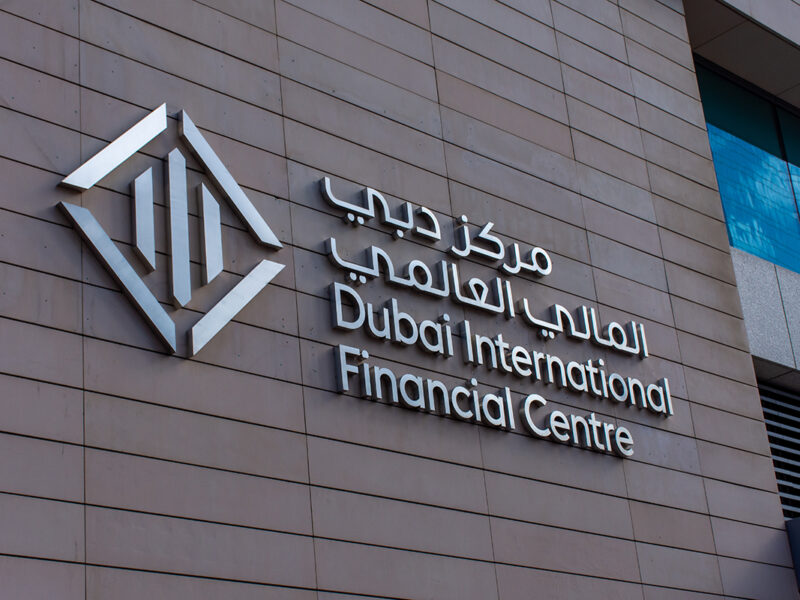Traditionally, ‘making money’ and ‘doing good’ have been seen as mutually exclusive concepts by business leaders and the wider population.
Doing good, the thinking went, cut into corporate profits and they alone dictated business decisions. This view, however, seems to be changing as companies turn increasingly toward social or ‘impact’ investments to satisfy the demands of a younger and more socially conscious population.
The term impact investment means investments that are made by companies or individuals with the intention of generating a measurable and beneficial social or environmental impact, alongside financial return.
“This is a conversation that started almost 30 years ago, maybe even more than that. It began around the time that Silicon Valley started thinking about venture philanthropy and venture capital models,” explains Gayle Peterson, an associate fellow at the University of Oxford’s Said Business School. “Using and taking those business models into social enterprise and social change has actually been occurring for a long time.”
Business sense
The difference today, according to experts, is that companies have come to the realisation that impact investment can help build loyalty among socially conscious millennial customers and prospective employees.
Among those leading the charge in the UAE is Crescent Enterprises CEO Badr Jafar, whose company is involved in a number of impact ventures, such as a high-tech, sensor-equipped line of clothing designed for blue-collar workers toiling in the oppressive heat of the Arabian Gulf. This sort of social responsibility, Jafar tells Arabian Business, makes business sense because, “that is what key stakeholders demand.”
Millennials are far more conscious about broader impact [generated by] the companies they are working in and behind the products they’ve been buying
In the case of the clothing line – called ‘Shamal’ (see page 31) – the sensors are used by foremen to monitor vital health signs and warn them in case a particular worker is facing health issues such as blood pressure problems or fatigue, which can often be dangerous if ignored until too late.
“By key stakeholders, I specifically mean the youth,” he explains. “They are not just our customers, but also our employees. Millennials are far more conscious about the broader impact [generated by] the companies they are working in, and behind the products they’ve been buying.”
Jafar’s assertion is supported by statistics. A 2015 Nielsen report, for example, found that 73 percent of global millennials are willing to pay extra for sustainable offerings, up from 50 percent the year before. Another study from US-based Cone Communications found that nine in 10 millennials would opt for brands associated with a cause, as well as pay more for products or take a pay cut to work for a responsible company.
“Especially when you think about a transient workforce… loyalty today will only be generated through those means. It is about loyalty to what your brand is and the power of your brand, but more about what your brand and company stand for,” Jafar adds. “If you’re able to retain talent, you’re far more likely to generate value.”
A teachable concept?
While most business programmes in the UAE and the wider region do not include specific modules on social or impact investing at the moment, there are an increasing number of programmes around the world that do, such as Harvard’s MBA programme – which includes several mandatory modules on social investing – or the University of Oxford’s Said Business School.
In the case of the Said Business School – which every year accepts a number of students from the UAE and the wider region – students are taught about a variety of complex issues around the world and how they pertain to impact investing, risk assessments, and potential opportunities.
“When you’re dealing with these really complex global issues, whether they be geopolitical, economic or social, it’s not something you can jet in and jet out. You need to be thoughtful about it,” Peterson explains. “We want to help our students by grounding them in issues and grounding them in solutions.”
If you’re able to retain talent, you’re far more likely to generate value
Jafar – a Cambridge alumnus – warns against believing that social or impact investing in the Middle East is necessarily the same as it would be elsewhere.
“Every region has its own challenges and nuances. So copy and pasting a curriculum from Harvard or from somewhere else isn’t really going to do the trick,” he remarks. “What we need is a sort of bottom up approach toward what it is that our region, our societies and our economies fundamentally require, and then try to find opportunities.”
A local example
As an example of how impact investing can be adapted to meet local needs, Peterson points to Rise, a Dubai-based wealth management start-up that caters to domestic employees and other low-income workers in the UAE. The company was founded by Said Business School Alumnus Padmini Gupta in 2016.
Speaking to Arabian Business, Gupta explains that millions of low-income people across the region – including many in the UAE – are without bank accounts, leaving them open to exploitation from loan sharks and employers and unprepared to deal with major life events, or to plan their retirement.
“If you are an expat in the UAE, or anywhere in the world, you would probably have calls from multiple companies seeking to manage your wealth, open offshore accounts for you, give you loans or even help you plan your retirement and return back home,” she says. “Nobody does this for low income migrants.”
In December 2017, Rise announced a partnership with United Arab Bank (UAB) to help open salary accounts for the UAE’s underbanked population.
“We undertake the acquisition and service, while the funds sit with United Arab Bank and are protected by UAE deposit protection schemes,” Gupta adds, noting that the company is also leveraging a proprietary artificial intelligence (AI) chat bot to engage its customers in conversations across a range of topics, from literacy and financial health to planning and opening accounts. To date, Rise’s chatbot has handled over 2.5 million messages and is currently serving over 20,000 unique users each week.
Making the case for impact investing
For many involved in social entrepreneurship, the question remains: How best to encourage similar practices across the wider business ecosystem? For some, such as Gupta, the answer lies in the ‘higher purpose’ of their companies.
“Purpose always trumps profit. Without question, successful innovation tends to be iterative in nature, based on speedy customer feedback and innovative entrepreneurship,” Gupta says. “But in the end, what drives Rise’s dynamic journey is our strong sense of higher purpose and our clear principles which help us stand out. We are a for-profit company, but that will never deter us from serving our key stakeholder, the migrant who has worked all their life to build a home and future for their family.”
Impact investing and social finance are ways in which shareholder value can incorporate the theme of social purpose without divesting profits
For others, such as Jafar, the shift towards more widespread impact investing will only take place once business leaders see the benefits for their companies.
“One [way] is the incentive-based model where some companies ultimately identify with the business case. But if you rely on rules and regulations, or people’s recognition of the right thing to do, that’s perhaps not the most effective way of getting people to adapt to new models of doing things,” he explains.
“You might get a change of behaviour, but it will be slow and it will be painful. By identifying with the business case and if you spell that out, business leaders fundamentally believe in that and realise it is in line with their self-interest.”
Additionally, Jafar says that in many cases, identifying a particular need – and then being able to meet it – may help businesses see the financial opportunities available while at the same time helping to address a particular social or environmental issue.
“Problems are usually created by a deficit of something. I’m being very trivial, but if it is a problem of hunger, it’s because of a deficit of food,” he explains. “That deficit of food means there’s a demand for food. So if you’re building a business case to address that challenge, you already have a captive demand that’s there.”
Similarly, Gupta points to well-known brands Facebook, Skype, Uber and Google as companies that addressed a social requirement, while at the same time being extremely profitable.
“Facebook has provided social connectivity in a globalised world. Skype [provided] accessibility to communication, Uber the ability to move and Google access to information,” she says.
“These are fundamental human rights now accessible to all, not just the privileged. The difference is often found in that when a company becomes large enough, its social purpose is undermined by shareholder value. Impact investing and social finance are ways in which shareholder value can incorporate the theme of social purpose without divesting profits.”
Said Business School’s Impact Investing Programme
Said Business School’s five-day programme at Oxford is designed to give business leaders – including many from the region – the skills necessary to develop an impact investing strategy for their business, and understand the sensitivities and nuances of impact investment in different cultural contexts.
Among the skills taught are how to measure impact, identify investable propositions, financial and human security, due diligence and the role of policy and social impact bonds.
Vital signs
Among the social impact ventures created by Crescent Enterprise’s internal incubator, CE-Creates, is Shamal, a clothing line that uses sensors to monitor the health of blue-collar workers. According to CEO Badr Jafar, CE-Creates spent a year and a half working with partners in India and labs in the US, “to create a line of clothing specifically for the workforce and outdoor labourers, not just in the Gulf. But in the Gulf there are billions of dollars of infrastructure projects that will require a lot of outdoor work.”
The clothes, he adds, are a potentially large business because they meet massive demand in other parts of the world where people work outside in high temperatures. “If you’re able to test it here, and it if works well here, there’s global applications for sure.”









